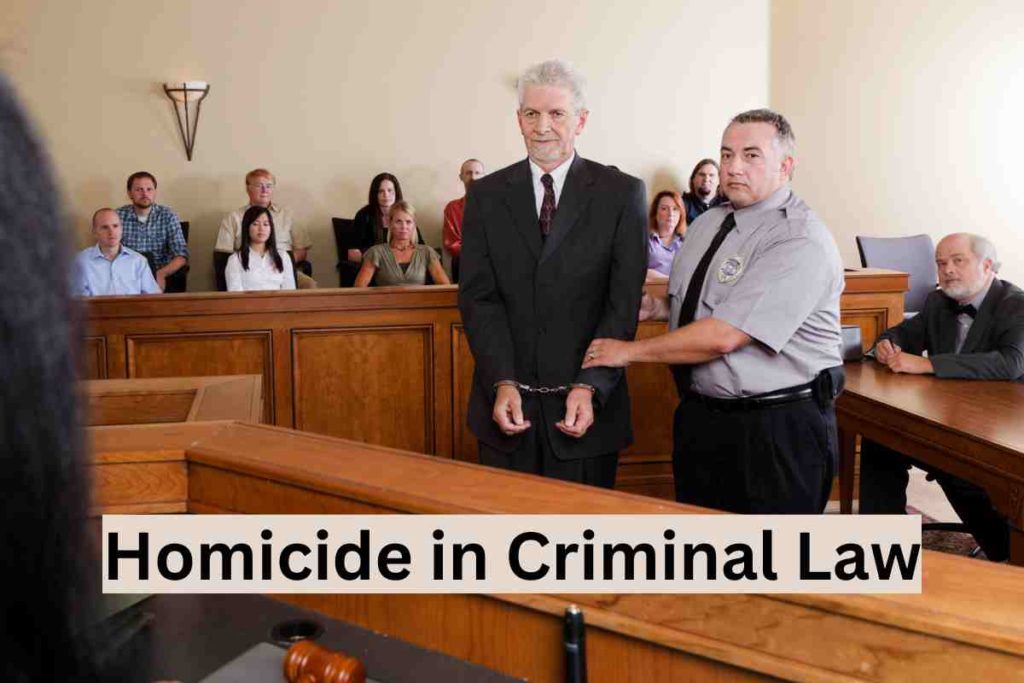Homicide, a term that simultaneously fascinates and repels, is a cornerstone of criminal law and popular culture. Yet, despite its seeming ubiquity, many of us lack a comprehensive understanding of what it truly entails. At its most basic level, homicide involves the act of one human taking the life of another. However, beneath this straightforward definition lie intricate layers of law, ethics, and social implications, transforming a seemingly black-and-white term into a kaleidoscope of grays. In this in-depth exploration, we will untangle the complex web of homicide in criminal law, dissecting its many forms, probing into legal principles like ‘malice aforethought,’ and examining the fascinating yet controversial concept of justifiable homicide. Come along on this journey as we delve into the intricacies of homicide laws, their implications, and their ever-evolving nature in our society.
The Definition of Homicide: The Basic Premise
Homicide, a word that often sends chills down our spine, is a fundamental concept in criminal law. But what exactly does it entail? At its root, homicide is the act of one person causing the death of another. Picture it as a vast forest encompassing various types of trees, each representing a unique form of homicide. This broad term, however, doesn’t inherently imply criminal culpability. It’s simply a neutral term describing one person’s death at the hands of another, a scientific description of an action and its result. Yet within this neutral forest, some trees stand with dark shadows – these are the criminal homicides, like murder and manslaughter. Others may stand tall, bathed in the light of justification or excuse. Understanding the basic definition of homicide is the starting point on our journey through the dense woodland of this complex legal concept. As we venture deeper into this forest, the intricacy and diversity of homicide in criminal law begin to unfold.
Different Types of Homicide: Murder, Manslaughter, and Beyond
Within the vast forest of homicide in criminal law, a diverse array of trees, each representing a different type of homicide. Let’s take a closer look at these varieties. Murder, the towering tree often capturing the public’s attention, is typically broken down into first and second degrees. First-degree murder is premeditated – the accused planned the killing, marking it with the chilling signature of intent. Second-degree murder, on the other hand, lacks this level of planning but is still intentional, making it no less deadly but slightly less foreboding. Then there’s the tree of manslaughter, divided into voluntary and involuntary branches. Voluntary manslaughter involves killing in the heat of passion, where the perpetrator was provoked and didn’t have time to ‘cool off.’ Involuntary manslaughter, in contrast, doesn’t involve an intent to kill but reckless behavior that results in death. Beyond these, there are even more species of homicide trees, including justifiable homicide and vehicular homicide, each with unique characteristics. Together, they form the dense, diverse woodland of homicide in the tapestry of criminal law. Understanding these different types helps us navigate this complex terrain, providing insight into the many faces of a single, weighty term: homicide.
The Concept of Malice Aforethought: A Legal Necessity?
Within the dense forest of homicide law, one concept acts as a critical landmark, a guiding star in the often confusing expanse – that concept is ‘malice aforethought.’ Despite its ominous name, malice aforethought isn’t about personal hatred or spite towards the victim. Instead, it’s a legal term that refers to the intentional act of causing death or serious bodily harm. It’s a deliberate state of mind, demonstrating a clear intent to kill or to cause damage that would likely result in death. Picture malice aforethought as a compass, pointing towards the tree of murder in our homicide forest. It separates murder, particularly first-degree murder, from other types of homicide, like manslaughter, that lack this level of intent. Understanding this concept is a legal necessity and a crucial tool for any explorer braving the intricate wilderness of homicide law. It allows us to decipher the subtle signposts, marking the path from one type of homicide to another, and adds depth to our understanding of the fatal consequences of intent in criminal law.
Justifiable Homicide: The Exception to the Rule
As we wander deeper into the forest of homicide law, we come upon an unusual specimen – the tree of justifiable homicide. This tree stands apart from the rest, bathed in the light of legal exception rather than cast in the shadow of criminality. Justifiable homicide is an act of killing considered legally permissible under specific circumstances, typically when it’s necessary to protect oneself or others from immediate, serious harm. Imagine it as a shield wielded by a threatening onslaught. It’s the homeowner who, in self-defense, kills an intruder posing an imminent threat or the police officer who, to protect others, shoots a dangerous, armed suspect. Although these actions resulted in death, they can be seen as justifiable due to the immediate and significant threats that triggered them. However, proving justifiable homicide is like walking a tightrope, balancing the gravity of taking a life and the necessity of defending oneself or others. This concept challenges our journey through the homicide law forest, reminding us that there can be exceptions to the rule even in the darkness.
Conclusion: The Ever-Evolving Nature of Homicide Laws
As we conclude our journey through the vast forest of homicide law, we must take a moment to appreciate the landscape’s dynamic nature. Like a living, breathing organism, homicide law evolves, responding to shifts in societal values, forensic science advances, and legal thought changes. It’s not a static entity frozen in time but a fluid, adaptable concept that constantly shapes and reshapes itself to fit the contours of changing societal norms and expectations. Recent years have seen new defenses explored, definitions of murder challenged, and even the concept of what constitutes life itself questioned. This constant flux speaks to the flexibility and adaptability of the legal system and its ability to grow, learn, and evolve. It reminds us that even as we navigate the dark and dense undergrowth of homicide, we do so on a path constantly being rewritten, reshaped, and reimagined. Our exploration of homicide, thus, is not a journey with a fixed destination but rather an ongoing voyage into the ever-evolving wilderness of criminal law.


